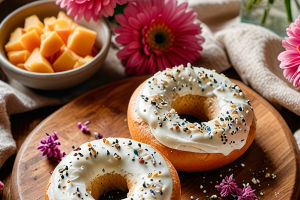Hi Lykkers! Pencils, a staple in daily life, are much more than a simple tool for writing. The materials that make up a pencil influence its performance, feel, and durability.
Understanding what goes into the creation of a pencil can provide you with a deeper appreciation for this everyday item. Below, we’ll explore the essential components and their role in crafting the perfect pencil!
1. The Core: Graphite and Clay Mixture
The most recognizable feature of any pencil is its core, commonly referred to as the "lead" (though it doesn't contain lead at all). This core is primarily composed of a mixture of graphite and clay. Graphite, a soft, grayish-black mineral, is the primary material that leaves a mark on the paper when pressure is applied. The amount of graphite mixed with the clay determines the pencil's hardness or softness. More graphite creates a softer pencil (e.g., 2B, 4B), while more clay results in a harder pencil (e.g., 2H, 4H).
The ratio between these two materials is carefully calibrated to achieve the desired balance of smoothness, darkness, and precision. Softer pencils are favored for artistic purposes, while harder pencils are preferred for fine, precise lines in technical drawing or writing.
2. The Wood: Cedar and Sustainable Alternatives
Historically, pencils have been encased in wood, providing protection for the graphite core while also offering a comfortable grip for the user. Cedar wood is a traditional choice due to its softness, which allows for easy sharpening, and its durability. The wood also has a pleasant aroma, making the sharpening process more enjoyable.
However, as sustainability concerns grow, many pencil manufacturers are exploring alternative, eco-friendly materials. For instance, bamboo and recycled materials have emerged as viable options for creating environmentally conscious pencils. These alternatives are not only sustainable but also lightweight and easy to carve.
3. The Eraser: Rubber, Vinyl, and TPE
While not part of the pencil’s main writing function, the eraser is an important component for correction. The eraser, typically located at the top of the pencil, is made from rubber, vinyl, or thermoplastic elastomer (TPE).
Rubber erasers are the traditional option and are known for their ability to remove graphite with minimal smudging. However, modern alternatives such as vinyl and TPE erasers offer additional benefits, such as being non-abrasive and less prone to damaging the paper’s surface. The choice of eraser material can impact how cleanly the pencil erases, with some options leaving behind little to no residue.
4. The Ferrule: Metal and Reinforced Plastic
The ferrule is the metal or plastic piece that holds the eraser in place. Typically made from aluminum or brass, the ferrule’s primary function is to provide structural support. Aluminum is favored due to its light weight and ease of molding, while brass is often used for a more premium, sturdy design. In some cases, a reinforced plastic ferrule may be used, offering a more durable and cost-effective alternative.
The metal ferrule has been a staple of pencil design for centuries, although recent shifts towards eco-friendly practices have led to the development of recyclable or biodegradable plastic ferrules.
5. The Paint: Non-toxic, Vibrant Coatings
The colorful outer layer of a pencil isn’t just for aesthetics, it also protects the wood from moisture and damage. Pencils are typically coated in a layer of paint, often containing non-toxic pigments that provide vibrant colors. These paints are designed to be durable and resistant to chipping, ensuring the pencil remains intact throughout its use.
Recent trends have seen a move toward more environmentally friendly paint options, with some manufacturers using water-based, non-toxic coatings. The development of these paints ensures that pencils are safe to use while also minimizing environmental impact.
6. Additional Components: The Clutch Mechanism (Mechanical Pencils)
While traditional pencils are still widely used, mechanical pencils have gained popularity for their precision and convenience. Mechanical pencils rely on a clutch mechanism to hold and advance the lead, which is typically made of solid graphite. The outer casing of mechanical pencils is usually made of plastic, metal, or a combination of both, offering a lightweight and durable structure.
The inner mechanism of a mechanical pencil contains a spring, which allows the lead to be advanced with a simple click. Unlike traditional pencils, mechanical pencils do not require sharpening, making them a favored choice for those seeking efficiency and precision.
The creation of a pencil is a refined process that combines different materials to produce a writing tool that is not only functional but also a pleasure to use. From the core composition of graphite and clay to the protective casing of wood or alternative materials, every element plays a vital role in shaping the pencil’s overall performance.
Whether you’re using a classic wooden pencil or a modern mechanical version, the materials behind this simple tool offer a blend of science, craftsmanship, and practicality that continues to evolve with time!
How Pencils Are Made
Video by Factora


